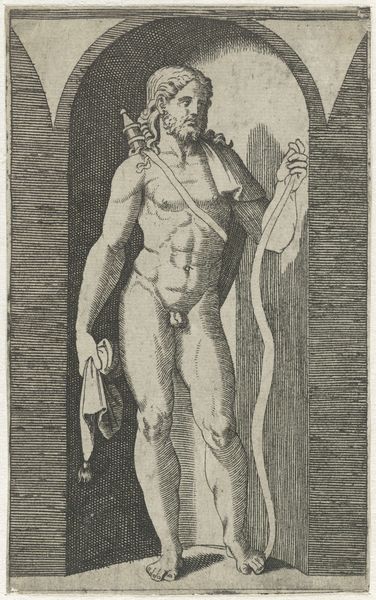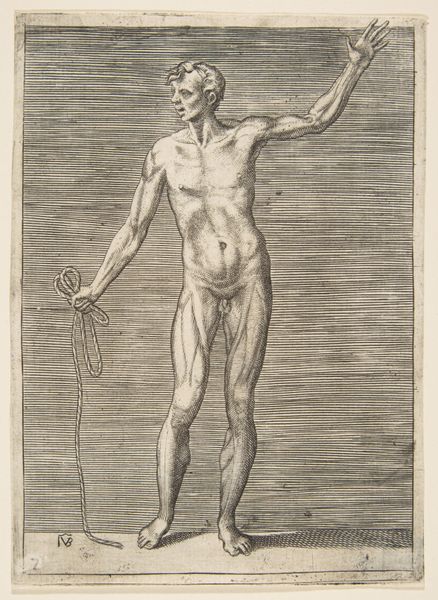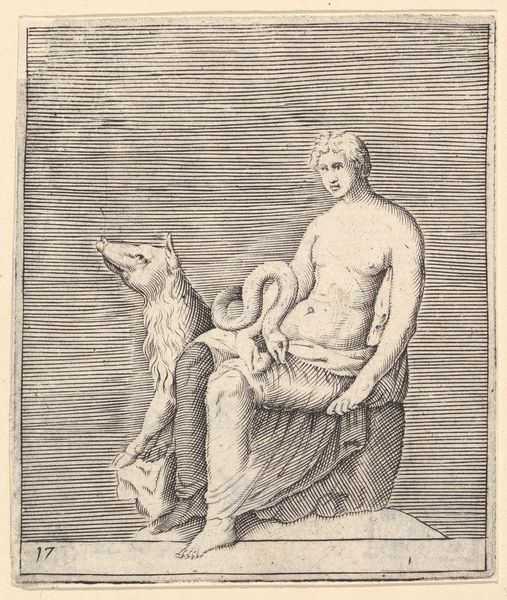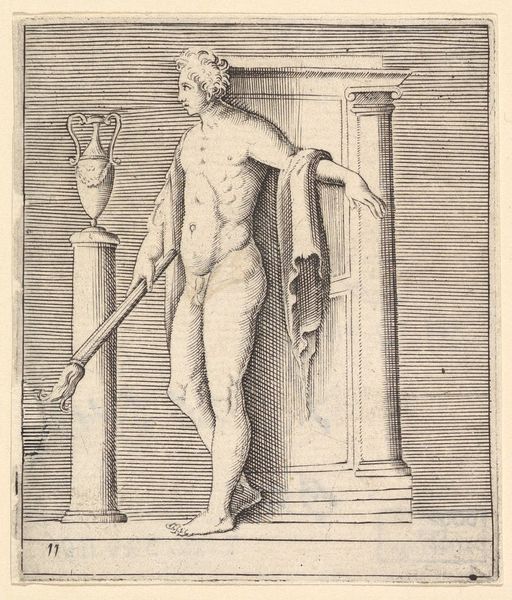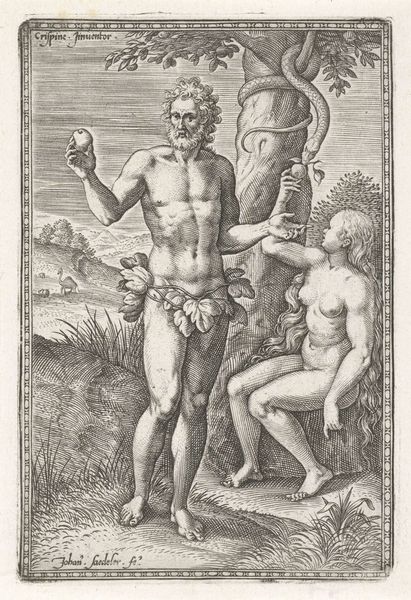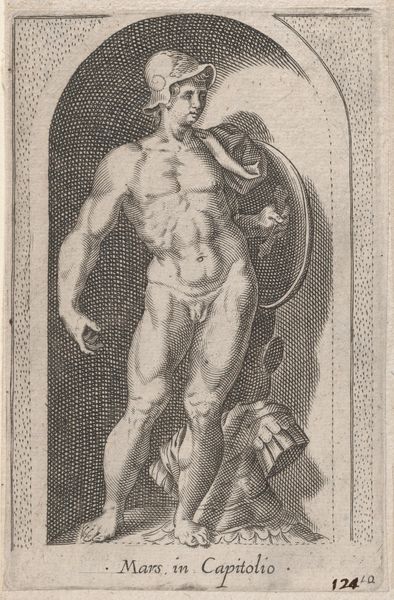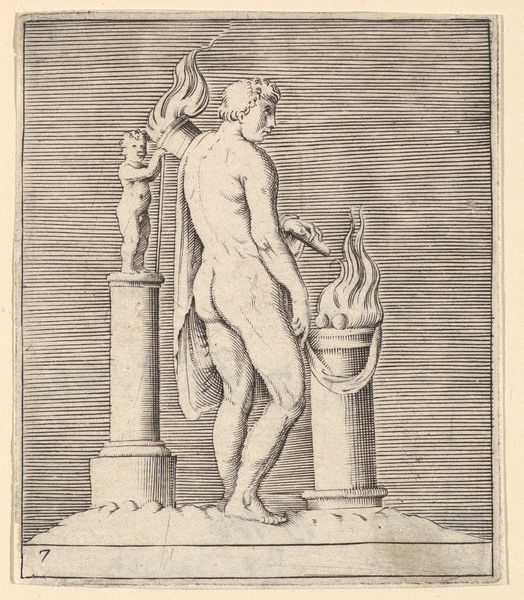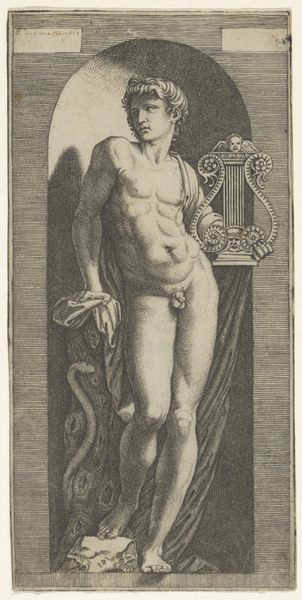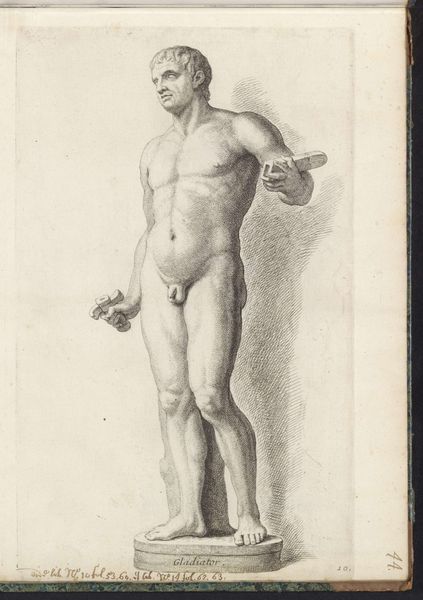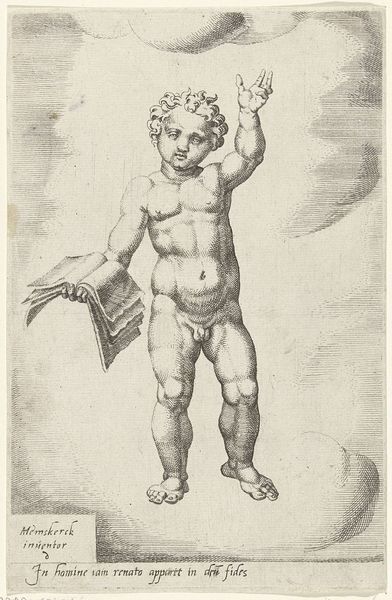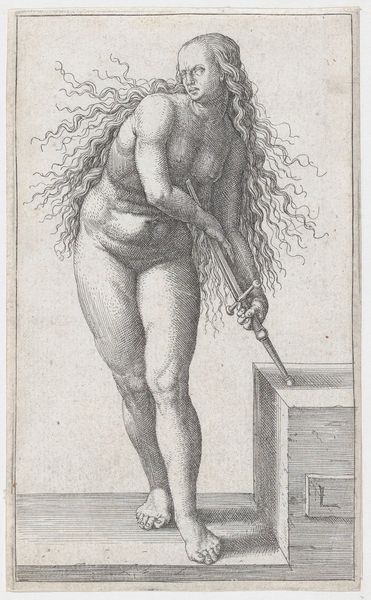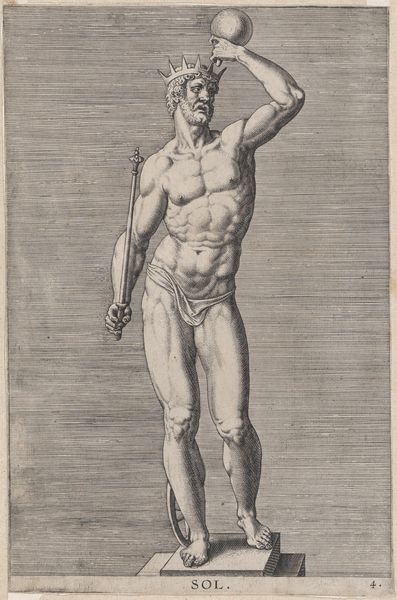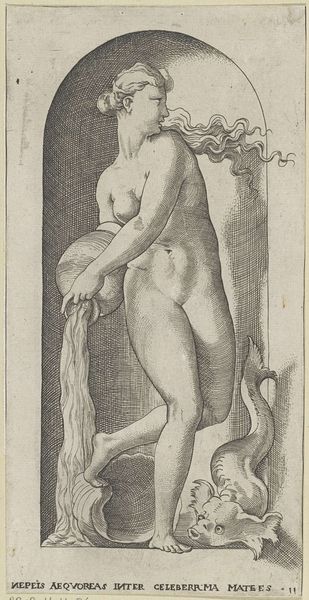
Man with Crayfish and Urn of Water, from "Ex Antiquis Cameorum et Gemmae Delineata/ Liber Secundus/et ab Enea Vico Parmen Incis" 1599 - 1622
0:00
0:00
drawing, print, engraving
#
drawing
#
baroque
# print
#
figuration
#
history-painting
#
engraving
#
male-nude
Dimensions: plate: 3 7/16 x 4 7/8 in. (8.8 x 12.4 cm)
Copyright: Public Domain
Curator: This engraving, dating from between 1599 and 1622, is entitled "Man with Crayfish and Urn of Water." It's part of a series, "Ex Antiquis Cameorum et Gemmae Delineata," and is currently held at the Metropolitan Museum. Editor: Striking. The stark contrast between the figure and the horizontal background creates a sense of almost otherworldly stillness. And the stark delineation of the muscular male figure... it's arresting. Curator: Absolutely. The artist, thought to be working from designs by Aenea Vico, employs the engraving technique to create a fascinating tension. Consider the labor involved in carving these lines onto the metal plate, and how this print could disseminate classical imagery across Europe. The subject matter points to larger issues about class and consumption because images were available at certain costs only. Editor: The lines! I’m captivated by how they define form, light, and texture. Look at the modeling of the figure; the artist uses hatching and cross-hatching with remarkable skill to evoke a three-dimensional form on a two-dimensional surface. And the sinuous lines emanating from the urn - they speak volumes about fluidity and movement. Curator: Indeed. The combination of the male nude, the crayfish—perhaps alluding to Cancer the astrological sign—and the water urn strongly suggest symbolic themes that echo broader cultural ideas about nature and masculinity during this time period. Perhaps reflecting notions around astrological healing in natural settings that only the bourgeois could afford to pursue. Editor: There’s something timeless about this composition. The careful arrangement of the figure, urn, and crayfish guides the eye through the image, creating a visual harmony that transcends the literal subject matter. The way that the artist utilizes horizontal lines in the background to convey the space that our character stands on as well. Curator: Looking at how widely distributed these images would have been due to printmaking gives a real sense of how the artist, even working under another's designs, became a cog in a cultural distribution wheel. Editor: Well, I must admit, seeing the level of detail attained through line alone offers endless interpretive possibilities. Curator: I find the historical insight into class relations the most interesting angle here.
Comments
No comments
Be the first to comment and join the conversation on the ultimate creative platform.
